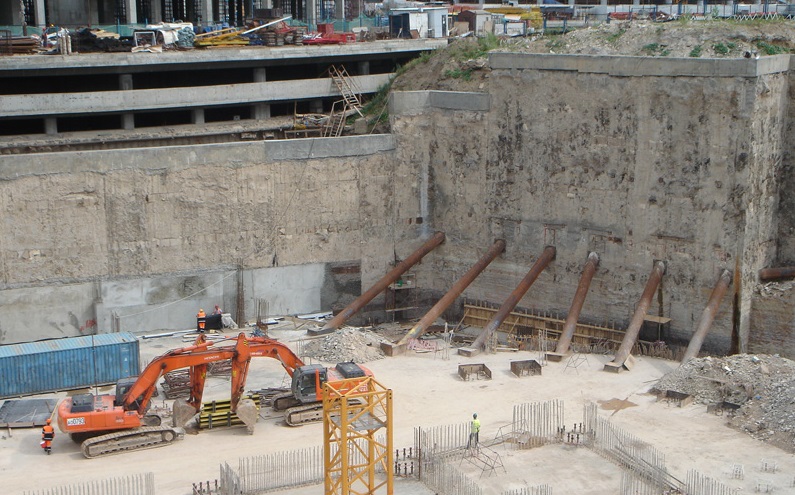Right from buildings, factories, high-rises, institutes, hotels, and hospitals to the new-age special structures, constructing, India is growing in the field of construction. These new structures and buildings have multistoried basements that are built deep into the ground.
To build such basements and ensure there is a formidable foundation, you require diaphragm wall construction. This is a versatile method ideal to retain structures, groundwater control, and load-bearing elements.
So, let’s delve into the world of the diaphragm wall technique that has become the game-changer for India’s civil infrastructure.
What is Diaphragm Wall?
A DC wall is built using a slurry-supported trench excavation technique, with the placement of reinforcing steel cages and concrete. The main aim is to provide structural support and stability, prevent soil movement, and control groundwater entry. Let us now understand the various benefits of the diaphragm wall.
Advantages of Diaphragm Wall Construction
Following are the key benefits of DC wall construction in any construction project.
- Versatility
Diaphragm walls are used in a wide range of construction projects, that includes residential, commercial, and other infrastructural projects. Their adaptability makes them suitable for project requirements with better soil conditions. They can be designed with shapes and thicknesses based on the customization of project needs.
- Cost-effective
Diaphragm walls offer significant cost savings, as they do not need to retain structures during excavation. This reduces the overall construction time and labor costs. In some construction companies, it is a permanent structural element reducing the costs that incur separate retaining walls.
- Improve structural performance
The great structural performance of diaphragm walls is attributed to their superior resistance to lateral loads and water pressure. They are thus a good option for jobs needing significant excavations or situated in regions with high groundwater levels. Additionally, they are resistant to seismic activity, which makes them a desirable option for building projects in earthquake-prone areas.
- Low vibration levels
Diaphragm walls also have the tremendous benefit of causing very little land vibration during construction, reducing the possibility of surrounding structures being damaged. Open excavation requires the use of heavy equipment, such as earth movers and drilling machines, which could weaken the foundation of the site’s entire soil and put nearby structures at risk of serious or irreparable harm.
- Minimize environmental effect
Diaphragm walls reduce noise, vibration, and air pollution during construction since they are built underground. They are therefore a perfect choice for tasks in cities or in places subject to tight environmental rules. Additionally, the construction process produces little spoilage, which lowers waste generation and elimination.
Material Required to Construct Diaphragm Wall
- Cement: Depending on the area and the state of the ground, cement must be utilized.
- Sand: It must be well-graded and contain 50% coarse sand.
- Water: Pure water that is free of harmful pollutants must be utilized. Water must be free of salt and other harmful contaminants while making bentonite slurry.
- Chemical admixtures must be used in concrete in accordance with their specifications and intended uses.
- Concrete: Used concrete must not have a water-to-cement ratio greater than 0.6. For optimal workability and easy flow in tremie pipe, the slump of the concrete utilized must be 150mm to 200mm.
Conclusion
This was all about the diaphragm wall technology. However, the game-changer in the civil infrastructure is moving toward constructing the city’s best architecture.
It really is the ‘Architect’s Hub,’ encouraging one to look back while moving forward and changing directions without pausing. As a one-stop shop for turnkey engineering and building services, we at BlueWing Design convert ideas into unique, creative solutions as per customers’ needs.
